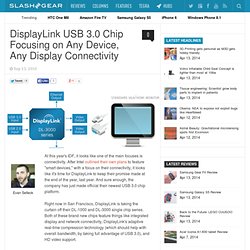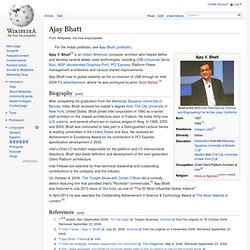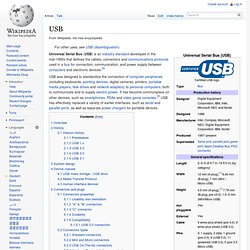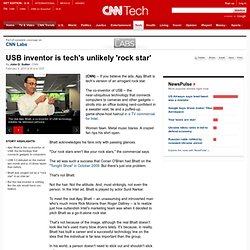

Intel's big week: What to expect and why. Update: USB 3.0 poised to take off. USB 3.0 adoption accelerates. IDF 2010 - The USB Implementers Forum (USB-IF) announced today that nearly 120 products have passed SuperSpeed USB 3.0 certification testing.

Approved devices and components include motherboards, notebooks, external storage devices, storage controllers, hard disk drives, PCI Express and ExpressCard add-in cards. "Since the first certified SuperSpeed USB product was announced last year at IDF 2009, we have witnessed exponential growth in the ecosystem," USB-IF president Jeff Ravencraft told TG Daily in an e-mailed statement.
"Strong support from consumers and manufacturers alike and momentum behind the technology continue to drive the industry forward as new SuperSpeed USB products are developed, tested and certified. " Meanwhile, In-Stat principal analyst Brian O'Rourke forecasted that SuperSpeed USB - with its high throughput and low power consumption - will gain substantial market share in industries that require the transfer of increasingly large amounts of data.
DisplayLink USB 3.0 Chip Focusing on Any Device, Any Display Connectivity. At this year's IDF, it looks like one of the main focuses is connectivity.

After Intel outlined their own plans to feature "smart devices," with a focus on their connectivity, it looks like it's time for DisplayLink to keep their promise made at the end of the year, last year. And sure enough, the company has just made official their newest USB 3.0 chip platform. Right now in San Francisco, DisplayLink is taking the curtain off their DL-1000 and DL-3000 single chip series.
Both of these brand new chips feature things like integrated display and network connectivity, DisplayLink's adaptive real-time compression technology (which should help with overall bandwidth, by taking full advantage of USB 3.0), and HD video support. We can thank the newest version of USB for giving us simultaneous support for HD video, networking data, and HD grahics. Press Release. Three More External USB 3.0 Drives Benchmarked : Which SuperSpeed USB Drive Is Right For You?
USB 3.0 to begin hitting critical mass in 2011. The adoption of USB 3.0 is expected to begin hitting critical mass in 2011, with NEC on track to ship at least 20 million next-gen xHCI controllers by the end of 2010.

"The high-rate of SuperSpeed adoption illustrates that USB 3.0 is a thriving and advanced ecosystem. It is already driving and creating a new generation of devices and components," USB-IF president and chairman Jeff Ravencraft told TG Daily at IDF 2010. "You know, just one year ago you could count the number of the number of certified USB 3.0 products on a single hand. But now we already have 120 certified and hitting the market. Of course, there are many, many more in the pipeline pending certification. " According to Ravencraft, both the industry and consumers worldwide are more than ready for USB 3.0 - which offers an impressive 10x performance increase over the previous iteration of the platform. "That is why the protocol itself has been designed to support (theoretical maximum throughput) speeds of up to 4.8 Gbps. USB 3.0 posts - Business Tech. Ajay Bhatt.
Ajay V.

Bhatt[3] is an Indian-American computer architect who helped define and develop several widely used technologies, including USB (Universal Serial Bus), AGP (Accelerated Graphics Port), PCI Express, Platform Power management architecture and various chipset improvements. Ajay Bhatt rose to global celebrity as the co-inventor of USB through an Intel 2009 TV advertisement, where he was portrayed by actor Sunil Narkar.[4] Biography[edit] After completing his graduation from the Maharaja Sayajirao University of Baroda, India, Bhatt received his master's degree from The City University of New York, United States.
Bhatt joined Intel corporation in 1990 as a senior staff architect on the chipset architecture team in Folsom. Intel's Chief I/O architect responsible for the platform and I/O interconnects directions, Bhatt also leads definition and development of the next-generation Client Platform architecture. References[edit] External links[edit] Sunil Narkar at the Internet Movie Database. Universal Serial Bus. Overview[edit] In general, there are four basic kinds or sizes related to the USB connectors and types of established connections: the older "standard" size, in its USB 1.1/2.0 and USB 3.0 variants (for example, on USB flash drives)the "mini" size (primarily for the B connector end, such as on many cameras)the "micro" size, in its USB 1.1/2.0 and USB 3.0 variants (for example, on most modern cellphones)the versatile "USB On-The-Go" scheme, in both mini and micro sizes.

Unlike other data cables (Ethernet, HDMI etc.), each end of a USB cable uses a different kind of connector; an A-type or a B-type. This kind of design was chosen to prevent electrical overloads and damaged equipment, as only the A-type socket provides power. Counter-intuitively, the "micro" size is the most durable from the point of designed insertion lifetime, as the result of latching mechanism (parts providing gripping force) being moved into plugs on the cable side.[5] History[edit] The basic USB trident logo[6] SuperSpeed USB 3.0 FAQ. Sandy Bridge to get USB 3.0 support. Testing Real-World Speed of U.S.B. 3.0 Hard Drives. Inventor is tech's unlikely 'rock star' The real Ajay Bhatt, a co-inventor of USB technology, imitates his television persona.

Ajay Bhatt is the co-inventor of USB, the technology that connects gadgets to computersUSB 3.0 debuted on the market last month and is 10 times faster than beforeBhatt was singled out as a "rock star" in an Intel adBut the real inventor is nothing like the ads would have you believe (CNN) -- If you believe the ads, Ajay Bhatt is tech's version of an arrogant rock star.
The co-inventor of USB -- the near-ubiquitous technology that connects computers to cameras and other gadgets -- strolls into an office looking nerd-confident in a sweater vest, tie and a puffed-up, game-show-host haircut in a TV commercial for Intel.